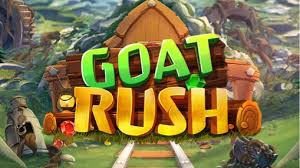
Goat Rush Slot
Mountain goats (Oreamnos americanus) possess a variety of adaptations that allow them to thrive in rugged terrains. Their physical structure is specifically designed to navigate steep cliffs and rocky outcrops where few other animals can venture.
Hooves and Balance First and foremost, mountain goats have specialized hooves that are both hard and flexible. The outer layer is tough and provides grip on slippery surfaces, while the inner pad can conform to uneven terrain, enhancing stability. This dual design allows them to traverse nearly vertical slopes with ease, making it seem as if they defy gravity.
Secondly, their low center of gravity and strong leg muscles contribute to their exceptional balance. Unlike many other animals, which may struggle on steep inclines, mountain goats can jump from one precarious ledge to another, often navigating paths that would terrify most creatures. This ability not only aids in escaping predators but also allows them to access food sources unavailable to less agile herbivores.
Insulation and Adaptation to Cold In addition to their climbing skills, mountain goats have thick fur coats that provide insulation against freezing temperatures. This fur changes with the seasons; in winter, their coat becomes denser and longer, offering protection against harsh winds and snow. They also have a layer of fat beneath their skin, which helps them maintain body heat during extreme cold. These adaptations enable them to survive where other animals might perish.
Behavior and Goat Rush Slot
Mountain goats exhibit interesting social behaviors and structures, particularly concerning their mating practices and group dynamics https://ww888.gifts/.
Herd Dynamics Typically found in small herds, mountain goats display a social structure that includes dominant males, females, and their offspring. During the breeding season, males engage in competitive displays to attract females. These competitions often involve head-butting and vocalizations, showcasing their strength and dominance.
Mothers are particularly protective of their young; kids stay closely bonded with their mothers for up to a year and learn essential survival skills through observation. This tight-knit family structure is vital for teaching kids how to navigate their challenging environment, ensuring the continuation of their lineage.
Feeding Habits When it comes to diet, mountain goats are herbivores that primarily feed on grasses, shrubs, and lichens. They have the remarkable ability to seek out nutritious plants, even in areas where vegetation seems scarce. Their selective grazing habits help shape their habitat, promoting biodiversity by preventing overgrowth of certain plant species.
Ecological Significance
The role of mountain goats extends beyond their individual existence; they are vital components of their ecosystem.
Impact on Vegetation As grazers, mountain goats help regulate plant populations within their territory. Their feeding habits create space for a diverse array of flora, allowing various species to flourish. This dynamic interaction between plant and animal life supports broader ecological health, benefitting other wildlife that share their habitat.
Predator-Prey Relationships From an ecological perspective, mountain goats also serve as prey for apex predators, such as wolves and bears. These predator-prey relationships are critical for maintaining population balances in the ecosystem. Healthy populations of mountain goats indicate an effective food chain, Goat Rush Slot where each component plays its part in sustaining the overall environmental equilibrium.



